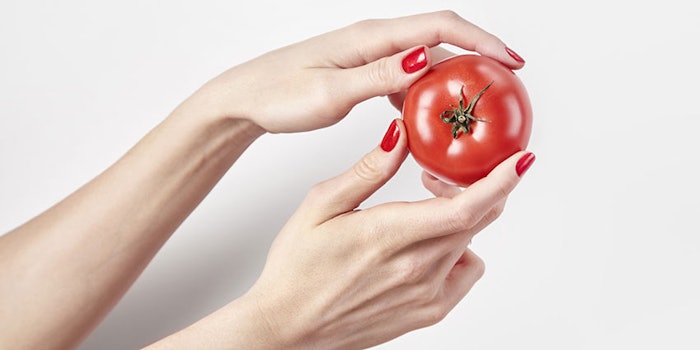
A tomato a day may keep the doctor away—recent research in Scientific Reports found that consuming tomatoes decreased skin cancer tumor growth.
The study was based on the theory that pigmented dietary carotenoids in the tomatoes can help to protect against UV light—past human clinical trials have suggested that eating tomato paste daily can have the same effect over time.
Test Methods
SKH-1 hairless and immunocompetent mice were fed AIN-93G or AIN 93G + 10% tangerine or red tomato powder for 35 weeks, and were eventually exposed to UVB light three times per week while tracking tumor growth. The control group was fed the same diet but not exposed to UV light.
Tomato-fed male mice experienced a 50% decrease in skin cancer tumors after exposure to UVB light.
UVB exposure occurred from weeks 11–20 during the study, on non-consecutive days—mice continued their diets without additional light exposure from weeks 21–35. Researchers began to measure tumor growth and size at week 18.
Two-dimensional measurement and digital calipers were employed weekly after the onset of visible tumors to track growth and number. Grading was conducted for hyperplasia, papilloma, microinvasive squamous cell carcinoma or full invasive squamous cell carcinoma.
Researchers also took note of subject skin fold thickness throughout the study in order to measure inflammatory response and edema—they found that peak inflammation occurred 48 hr after the first UVB exposure.
Moving Forward
Lycopene, the primary carotenoid in tomatoes, has been found to be the most powerful antioxidant of the group. However, during testing, researchers found that whole food tomatoes were more effective in preventing redness after UV exposure than synthesized lycopene supplements.
In addition, scientists found that under testing conditions, tomato-fed male mice experienced a 50% decrease in skin cancer tumors compared with the control, while female mice did not experience a significant difference in tumor numbers. The study’s authors plan to use this information for future research about how gender affects preventative strategies.










